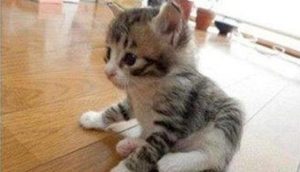Many pet owners have observed their cats begging for food or sneaking snacks from the table. This common behavior often leaves owners wondering whether these foods are safe for their feline friends. When it comes to ragdoll kittens, their food choices are not just about preferences but also about health and safety. In this article, we will explore what ragdoll kittens cannot eat and provide some effective feeding tips to ensure their healthy growth.

What They Can’t Eat and How to Feed Them Properly
Foods Ragdoll Kittens Should Avoid
Human Foods That Are Toxic to Kittens
Some human foods can be extremely harmful to ragdoll kittens. For example, chocolate contains theobromine, which can cause abnormal heart rhythms, tremors, seizures, and even death in cats. Grapes and raisins are also dangerous as they may lead to kidney failure. The exact reason why grapes and raisins are toxic to cats is still unclear, but even small amounts can make a cat ill, with repeated vomiting and hyperactivity being early signs. Additionally, onions, garlic, and chives contain sulfoxides and disulfides, which can damage cats’ red blood cells and cause anemia.
Unsafe Treats and Supplements
Certain treats marketed for cats may contain harmful ingredients. Those with artificial flavors, colors, or preservatives often include onion or garlic powder, which can disrupt red blood cell function in cats, leading to anemia. Moreover, many processed snacks are high in carbohydrates, which are not ideal for kittens that require more protein. Feeding ragdoll kittens excessive treats can result in obesity and even diabetes. It is also important not to add extra vitamins or minerals to a complete and balanced cat food, as this may cause nutrient imbalances.
Raw and Cooked Foods to Avoid
Raw meat and fish can pose significant risks to ragdoll kittens due to the presence of pathogens like Salmonella and E. coli, which may cause serious illnesses. Furthermore, some fish contain thiaminase, an enzyme that breaks down thiamine, an essential B vitamin for cats. A lack of thiamine can lead to serious neurological problems. Bones, especially chicken and fish bones, are hazardous as they can splinter and cause obstructions or cuts in the digestive system. Fat trimmings, whether cooked or uncooked, may cause intestinal upset, resulting in vomiting and diarrhea.
Proper Feeding Techniques for Ragdoll Kittens
Choosing the Right Kitten Food
Ragdoll kittens need high-quality kitten food that is specially formulated to meet their nutritional needs during the rapid growth phase. This type of food should have meat as the primary ingredient, be easily digestible, and contain a large amount of nutrients. It should provide a balance of proteins, fats, carbohydrates, vitamins, and minerals to support their rapid growth and development.
Establishing a Feeding Schedule
From weaning until six months of age, ragdoll kittens should be fed at least three times a day. This is because they have small mouths, teeth, and stomachs, so they cannot consume and digest large amounts of food in one meal. After six months, their growth rate slows down, and their activity level may decrease slightly. At this point, they can be fed fewer times per day, but it is still important to monitor their food intake and adjust the feeding schedule according to their individual needs.
Ensuring Fresh Water Supply
Providing clean and fresh water is crucial for ragdoll kittens. Unlike some other pets, cats have a low thirst drive, which means they may not drink enough water. However, adequate water intake is essential for their urinary tract health. Owners can encourage kittens to drink more water by using a cat fountain or placing multiple water bowls around the house. The water should be changed daily to ensure freshness.
Introducing Variety Gradually
While it is important to maintain a consistent diet for ragdoll kittens, introducing new foods gradually can help prevent digestive upset. If you want to switch their food or add new ingredients, do so slowly over a period of several days. This allows their digestive system to adapt to the changes and reduces the risk of diarrhea, vomiting, or other gastrointestinal issues.
Conclusion
In summary, ragdoll kittens should avoid certain human foods, unsafe treats, and specific raw or cooked foods. By choosing the right kitten food, establishing a proper feeding schedule, ensuring a fresh water supply, and introducing variety gradually, owners can provide the best possible nutrition for their ragdoll kittens. These practices will help support the kittens’ healthy growth and development, and also help prevent various health problems. Remember that understanding and respecting your pet’s natural feeding behavior is key to building a strong and healthy bond with them.
Q&A Session
Q1: Can I feed my ragdoll kitten small amounts of human food as treats?
A1: It is generally not recommended to feed your ragdoll kitten human food as treats. Many human foods are not suitable for cats and may even be harmful. If you want to give treats, choose cat-specific treats that are made from high-quality ingredients and are free from harmful additives.
Q2: How can I tell if my ragdoll kitten is getting the right nutrition?
A2: Some signs that your ragdoll kitten is getting the right nutrition include a glossy coat, bright eyes, steady weight gain, and normal energy levels. If you have concerns about your kitten’s nutrition, consult with a veterinarian for personalized advice.
Q3: What should I do if my ragdoll kitten refuses to eat?
A3: If your ragdoll kitten refuses to eat, it could be due to various reasons such as illness, stress, or dislike of the food. Check if your kitten is showing any other signs of illness and consult a veterinarian if necessary. You can also try offering a different type of kitten food or warming up the food to make it more appealing.
